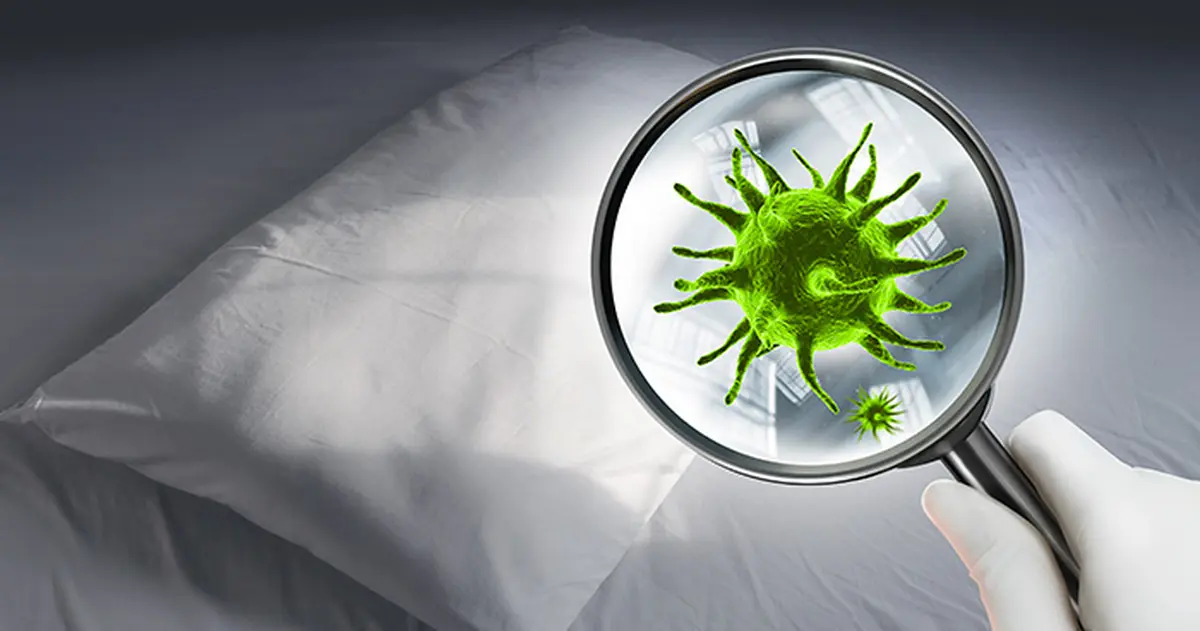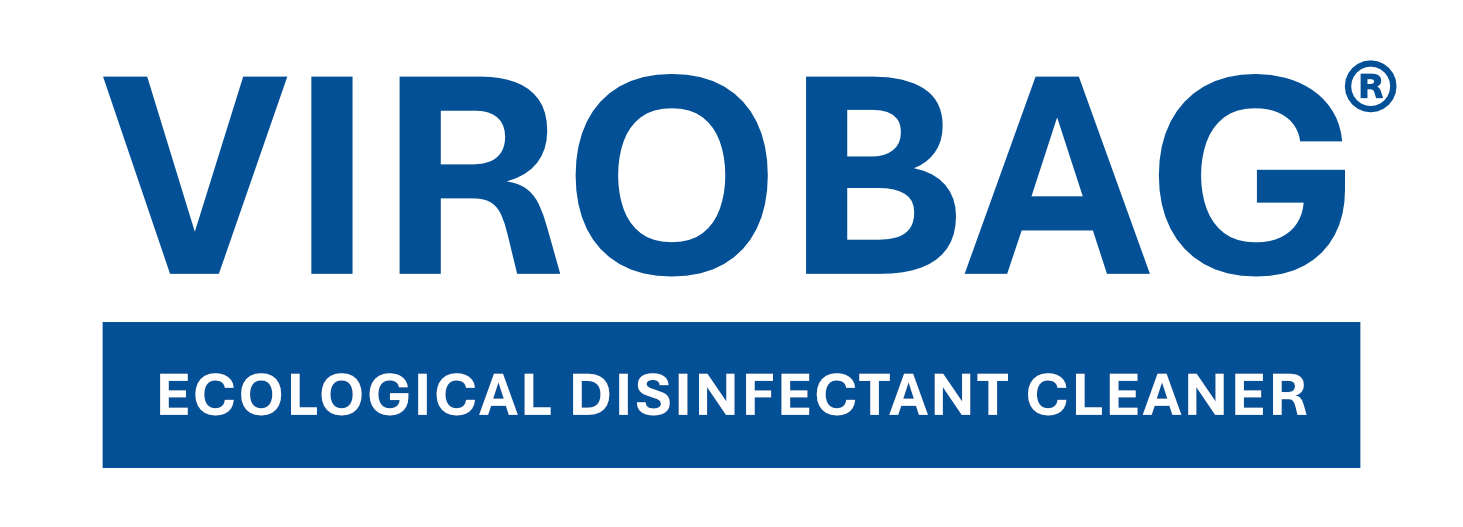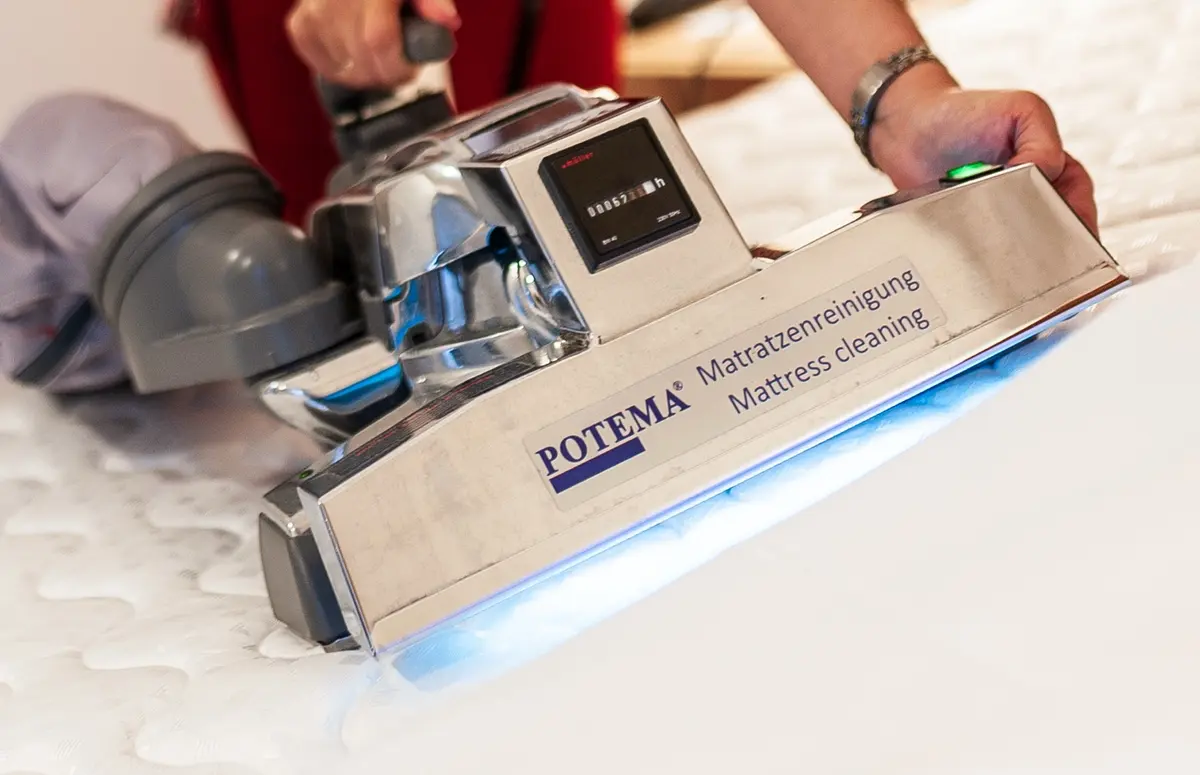Viruses
Cleaning of mattresses from viruses and microbes, disinfection of mattresses from microbes, elimination of viruses and allergens by UV-C lamp or vacuum ozonation system BIO-OZON is performed on behalf of our company, which provides services to clients in the areas of dry cleaning of mattresses, deep cleaning of mattresses, steam mattress cleaning, mattress disinfection, mattress ozonation, mattress impregnation including the sale of special mattress cleaners according to your requirements in top quality according to our internal company standards, IICRC™ guidelines and standards and the professionally implemented VIROBAG® system.

 The VIROBAG® trademark defines the branded technology concept of a professionally qualified Carpet Service® implementation company focused on the regular antibacterial / antiviral maintenance, cleaning, disinfection, of synthetic, natural, wool, silk and American-made mattresses, beds and textiles in a dry way. This branded concept delivers the utmost professionalism in full synergy with maintaining ethical, environmental and quality performance standards including contractual guarantee of contractor services.
The VIROBAG® trademark defines the branded technology concept of a professionally qualified Carpet Service® implementation company focused on the regular antibacterial / antiviral maintenance, cleaning, disinfection, of synthetic, natural, wool, silk and American-made mattresses, beds and textiles in a dry way. This branded concept delivers the utmost professionalism in full synergy with maintaining ethical, environmental and quality performance standards including contractual guarantee of contractor services.
Mattress and sleep are two connected vessels. We sleep on a mattress for an average of 7 hours a day, spending 1/3 of our total life on it. A standard mattress has a lifespan of up to 5-7 years on average and a premium mattress has a lifespan of 10-15 years, making it the longest used piece of furniture in our home.
Mattresses are one of the most used and often overlooked household items when it comes to maintenance and hygiene. A closer look reveals that they provide an ideal environment for the accumulation of microorganisms such as viruses, mites, and even some types of viruses. This text will focus on the relationship between mattress hygiene and viruses, particularly how proper mattress maintenance can help reduce the risk of infections. We will also discuss modern disinfection methods and technologies in the mattress industry that are designed to minimize contamination.
Although the mattress is the cleanest part of the bed with the lowest incidence of germs, its biggest problems tend to be mold and fungi. Yet the level of microbes found on mattresses was lower than in other parts of the bedroom. This is probably due to the mattress protectors and sheets that act as a protective barrier to the mattresses.
What are viruses and how do they spread?
Viruses are small particles that are able to infect living cells. Unlike bacteria, they are not independently capable of metabolic functions and need a host cell to survive and reproduce. Viruses are found in all living organisms and are transmitted by various routes – droplet infection, contact with infected surfaces or direct contact with body fluids. When a virus enters a host cell, it uses its mechanisms to replicate its genetic material and produce more viruses. This process leads to infection, which can result in a range of diseases – from the common cold to serious illnesses such as influenza, hepatitis or COVID-19.
How can viruses get on mattresses?
Viruses can be transferred to the surface of mattresses in a variety of ways, for example:
- by direct contact with the skin or saliva of the person lying on the mattress.
- Droplet infection, where droplets containing viruses land on the surface of the mattress (for example, when sneezing or coughing).
- Contaminated items such as towels, pyjamas or bedding that have been in contact with an infected person.
Viruses can survive on surfaces such as textiles for varying lengths of time depending on temperature, humidity and type of material. For example, corona viruses are able to survive on textiles from a few hours to several days, which can be a problem for mattress hygiene if they are not cleaned regularly.
Why is a mattress an ideal environment for microorganisms?
Every night our body produces sweat, dead skin cells and other bodily fluids that accumulate on the surface of the mattress while we sleep. These substances are suitable nutrients for microorganisms that settle on the mattress. In addition, the mattress is often enclosed between the sheets and the bed frame, which restricts airflow and creates a moist and warm environment ideal for the growth of microorganisms.

How can viruses survive on surfaces?
Viruses are not living organisms and therefore cannot reproduce outside the host cell. However, they can survive on different surfaces long enough to cause infection if they come into contact with humans. For example, the SARS-CoV-2 coronavirus, which causes the disease COVID-19, is able to survive on some materials, such as plastic or metal, for up to 72 hours, while its lifespan decreases on textiles. However, depending on the type of surface and the surrounding conditions, even textiles such as mattresses can be a survival environment for viruses.
How to keep mattresses clean and hygienic
Mattress cleanliness is a key element in preventing the spread of microorganisms and reducing the risk of infections. Here are some ways to properly maintain your mattress:
Vacuum regularly – Using a vacuum on your mattress is one of the easiest ways to remove dust, dead skin cells and other debris. Some vacuum cleaners have special attachments for mattresses that provide a deep cleaning.
Washing covers and blankets – Covers and blankets should be washed regularly at high temperatures (at least 60°C) to eliminate viruses and viruses.
Ventilation and exposure to sunlight – A mattress that is regularly exposed to fresh air and sunlight is less likely to harbour microorganisms. Sunlight has a natural disinfectant effect and helps destroy some types of bacteria and viruses.
Using disinfectant sprays – There are sprays that are specifically designed for disinfecting mattresses. These products contain active ingredients against bacteria and viruses and provide temporary removal of microorganisms.
Using a protective cover – Special mattress covers are designed to be easily washable while preventing moisture, dust and bacteria from penetrating the mattress. Hypoallergenic covers can reduce the risk of allergies and prevent the spread of dust mites and other allergens.
Modern mattress disinfection technology
Disinfecting mattresses today is not limited to traditional methods such as vacuuming or washing. Modern technology has brought new, more effective options that can improve the cleanliness of mattresses and reduce the risk of infections.
UV light
Ultraviolet (UV) light, specifically UV-C radiation, is an effective agent against viruses, bacteria and fungi. UV-C light acts on the genetic material of microorganisms, breaking its structure and thus killing or inactivating the microorganisms. This technology is now widely used in hospitals and laboratories, but is becoming increasingly popular in homes as part of air purifiers or surface disinfection equipment.
BIO OZON
The disinfecting properties of ozone result from its ability to oxidize molecules in the cells of bacteria, viruses and other microorganisms. When ozone comes into contact with these pathogens, it disrupts the cell membrane or wall of the microorganism, leading to its decomposition and subsequent death. This process works similarly to the action of conventional disinfectants, but without the use of chemicals, which is beneficial for people who prefer natural and eco-friendly solutions.
Steam cleaning
Steam cleaners use high-temperature steam that is able to penetrate deep into the mattress and kill microorganisms. The steam not only removes visible dirt but also kills viruses, viruses and dust mites. It is important to allow the mattress to dry properly after steam cleaning to prevent mold and mildew.
Nanotechnology cleaners
Nanotechnology is another advanced method that is used to protect surfaces against microorganisms. These treatments may include nanoparticles of silver or copper, which have natural antimicrobial properties. For example, silver nanoparticles disrupt the cell membrane of microorganisms and prevent them from multiplying.
Molds, viruses, microbes and mites are not only a hygiene but also a health problem in mattresses. However, with appropriate prevention, maintenance and the right choice of mattress, the risks can be significantly reduced. Not even the thickest sheets and blankets can protect us from microparticles. Dust mites or moulds, which often number up to one million and produce allergy-causing faeces that settle in our mouths, noses, eyes, etc. every time we move. In addition to the allergy manifesting as itching, mucous membrane inflammation, bronchitis, asthma and shortness of breath can be added. These conditions can be prevented by professional cleaning and deep dry disinfection with UV-C radiation or vacuum ozonation of the mattress with a thorough machine vacuum.
Download
Technical sheet POTEMA® (PDF)
Technical sheet VIROBAG® (PDF)